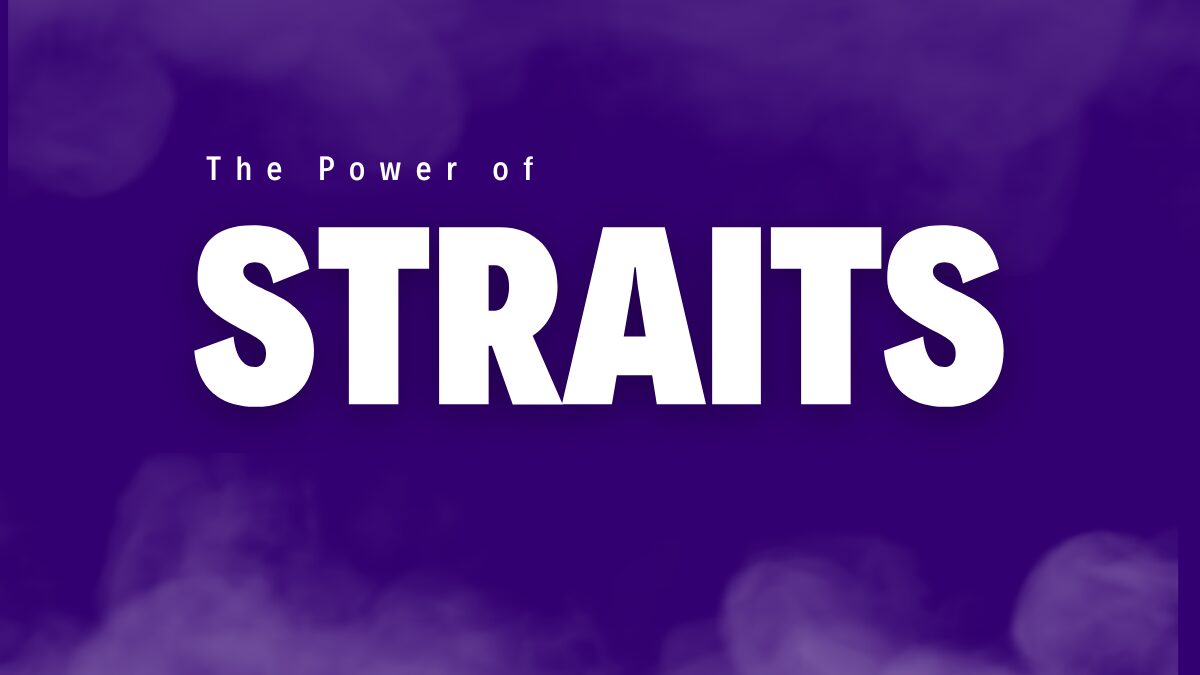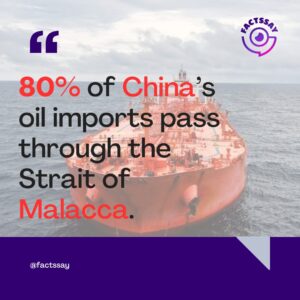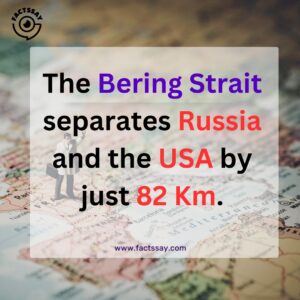
You’ve probably heard that the next world war might not be over land or oil—but over water.
Hard to believe? But here’s the thing: water makes up 71% of our planet, and controlling it holds the key to global dominance. And speaking of control, you’ve likely heard the phrase: “Who controls the water, controls the world!” But how does water give someone control over the world? What’s the big deal with water? Why is water such a power-determining force? The answer isn’t just floating around in the vastness of oceans—it’s hidden in something much smaller and more strategic.
The key lies in something called a “strait.” And before you get it twisted, I’m not talking about “straight”, as in walking a line. (pause for a light chuckle) Let’s get straight to the point—no pun intended!
The part of the map where a narrow body of water connects two larger ones while separating the land! These little connectors are some of the most strategically important spots on the planet.
What are Straits?
Have you ever looked at the World Map, where the narrowest blue areas naturally expand into broader blue areas? That’s a strait, separating the green areas on the map. More comprehensively, the National Geographic Encyclopaedia describes a strait as a narrow body of water that connects two larger bodies of water.
These straits might seem small, but they’ve been the world’s biggest game-changers, controlling trade routes, shaping empires, and even stirring up some serious geopolitical drama. These natural chokepoints are crucial for international maritime navigation. From ancient times to modern-day geopolitics, straits have held immense strategic importance.” And we can’t justify its strategic significance without talking about the World’s most important straits!
Strait of Malacca: The Maritime Superhighway
Southeast Asia is near the Strait of Malacca, a vital sea access that links the Pacific and Indian oceans. Geographically and politically, the Strait of Malacca is a vital commerce route since it is one of the most important maritime chokepoints in the world. This narrow stretch of water spans 800 kilometers (500 miles) in length and varies in width from 65 to 250 kilometers (40 to 155 miles).

Because of its strategic location, the Strait of Malacca is essential for maritime trade. Stretching between the Indonesian island of Sumatra to the southwest and the Malay Peninsula to the northeast, it functions as the main shipping route connecting the Indian and Pacific oceans.
The waterway’s congestion is most evident at its narrowest point, where it is only 2.7 kilometers wide. This creates a chokepoint that is vulnerable to piracy, theft, and blockades, making control of this vital passage a top priority for regional and global powers.
To highlight its importance, approximately 80% of China’s oil imports and a large share of its iron ore, natural gas, and manufactured goods pass through this narrow channel. It’s one of the busiest maritime corridors in the world. According to the World Economic Forum, around 94,000 ships pass through this strait annually, carrying around 30% of all traded goods, including oil, and liquefied natural gas But because of its heavy reliance on this canal, China finds itself in a situation referred to as the
“Malacca Dilemma.” Any disruption might have a significant impact on China’s economy and energy security, regardless of geopolitical upheaval or piracy. Consequently, the Strait of Malacca functions as an essential and fragile lifeline for global trade.
Strait of Hormuz: Gateway to the Persian Gulf
Let’s move west to the Middle East, where the Strait of Hormuz is located. This is possibly the most important strait in the world. This strait connects the Persian Gulf to the Arabian Sea and the Gulf of Oman, making it an essential conduit for the world’s oil trade.
It is a crucial moment in the Middle East’s geopolitical history. Oman and the United Arab Emirates border the Strait of Hormuz to the south, while Iran borders it to the north.
Moreover, if we talk about the dimensions and geography of the Strait of Hormuz. According to Wikipedia, it stretches approximately 167 kilometers in length, and at its narrowest point, it is only about 33 kilometers wide. Compared to any other strait, the significance of the Strait of Hormuz is unparalleled. Here’s how!
According to U.S. Energy Information Administration, nearly 21 million barrels of oil pass through this strait every day, accounting for about 30% of the world’s seaborne-traded crude oil. Additionally, it carries 20% of the world’s liquefied natural gas (LNG) each year.
Given its importance, the Strait of Hormuz is a focal point for geopolitical tensions, with any disruption here having far-reaching consequences for global energy markets and security. Its control is not just a matter of regional power dynamics but a global concern.
Bab El Mandeb Strait: The Gate of Lamentation
Continuing our westward journey, we arrive at the Bab el-Mandeb Strait, a narrow gateway connecting the Red Sea to the Gulf of Aden. This strait is critical for trade routes linking Europe to the Indian Ocean.
This strait got its name due to the dangers attending its navigation. In Arabic, “Bab” means “gate” and “Mandeb” translates to “lamentation” or “grief,” describing the challenges sailors historically faced when passing through this narrow stretch of water.
Geographically, the Bab el-Mandeb Strait is a narrow waterway situated between Yemen on the Arabian Peninsula and Djibouti and Eritrea in the Horn of Africa. It connects the Red Sea to the Gulf of Aden and, ultimately, the Indian Ocean. Spanning approximately 50 kilometers in length and narrowing to just 26 kilometers at its tightest point, the strait is further divided by Perim Island into two channels: the Eastern and Western channels. This narrow passage makes it one of the most critical chokepoints in the world, especially for the transport of oil and gas.
The National Geographic notes that, according to the International Maritime Organization, up to a quarter of the world’s shipping traffic passes through the Bab-el-Mandeb Strait, amounting to several billion tons of cargo each year. This includes an estimated 4.5 million barrels of oil per day, based on data from the U.S. Energy Information Administration.
Strait of Gibraltar: Gateway to the Mediterranean
Next, we venture to the Strait of Gibraltar, where the Atlantic Ocean meets the Mediterranean Sea. This strategic chokepoint not only facilitates trade but also serves as a geopolitical hotspot between Europe and Africa.
According to the Encyclopedia Britannica, the strait’s strategic location has made it a vital maritime route for centuries, connecting the Atlantic Ocean to the Mediterranean Sea and separating southern Spain from northern Morocco. This narrow passage is approximately 58 kilometers long with a width of just 13 kilometers at its narrowest point. Every year, thousands of vessels pass through this strait, carrying goods, oil, and other resources between Europe, Africa, and beyond, making it a crucial artery for international commerce.
But it’s not just about trade—this strait is also a geopolitical hotspot. When you look at a map of Gibraltar, it might seem like just another Spanish city. However, Gibraltar is a unique overseas territory of the United Kingdom. Gibraltar hosts a vital naval base for the UK, turning it into a strategic hub for monitoring maritime traffic through the strait. This base is essential for NATO operations, particularly in ensuring the security and flow of maritime traffic through this narrow passage. Spain, however, has never been happy about British control of Gibraltar, leading to a long-standing territorial dispute that continues to cause diplomatic friction.
As a major maritime route, the Strait of Gibraltar is strategically significant and functions as an essential chokepoint. The Council on Foreign Relations asserts that the control and security of the Strait of Gibraltar are of paramount importance to both NATO and the European Union, given its strategic role in ensuring the free flow of maritime traffic and energy supplies.”
Bering Strait: The Gateway to the Pacific Ocean
Finally, we journey far north to the Bering Strait, a maritime passage that plays a crucial role in connecting two vast continents.
The Bering Strait is a narrow passage of water, approximately 82 kilometers (51 miles) wide at its narrowest point, that separates the easternmost point of Russia from the westernmost point of Alaska in the United States. This strait not only serves as a physical divide between Asia and North America, but it also connects the Bering Sea to the Arctic Ocean, making it a vital link in the global maritime chain.
As Arctic ice diminishes due to climate change, the Bering Strait’s role as a navigable route has grown, offering shorter shipping paths between the Pacific and Atlantic Oceans.
The strategic value of the Bering Strait extends beyond trade. This narrow waterway is also a critical point of geopolitical interest. Both the United States and Russia monitor the region closely, not only for its potential as a commercial shipping route but also for military and security reasons. The presence of natural resources, such as oil and gas, in the surrounding areas further enhances the strait’s importance, making it a focal point in Arctic geopolitics.
This positioning of Bering Strait makes it a vital passage for marine biodiversity, migratory species, and potentially future shipping routes.
Moreover, the Bering Strait is ecologically significant. It is home to a diverse range of marine life, including whales, seals, and seabirds. This positioning of Bering Strait makes it a vital passage for marine biodiversity, migratory species, and potentially future shipping routes.
Final Words
So this was all about how 71% of Earth controls the rest of 29% of Land!
It’s incredible how these narrow passages of water can have such a massive impact on global power dynamics!
If you found this article informative, You’re indeed a fact-savvy and already our favorite too! 😉
To get more amazing information like this, make sure to befriend us… so this isn’t our first and last interaction!”





